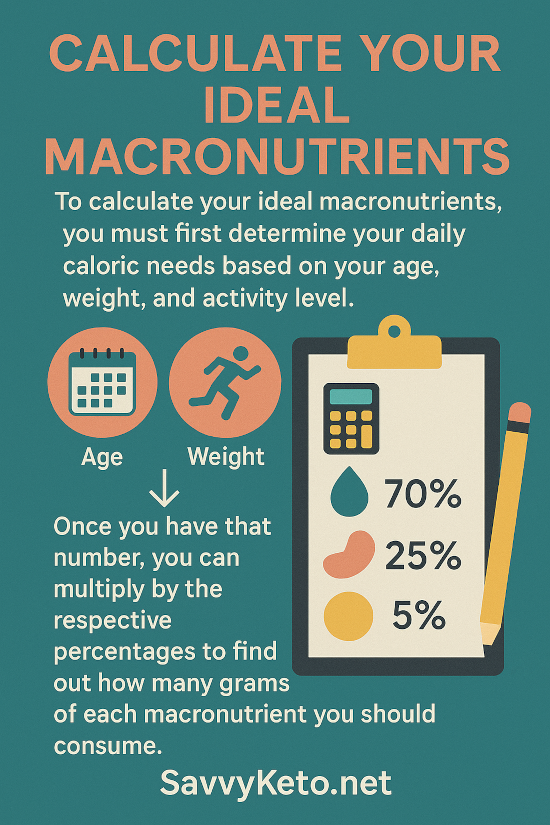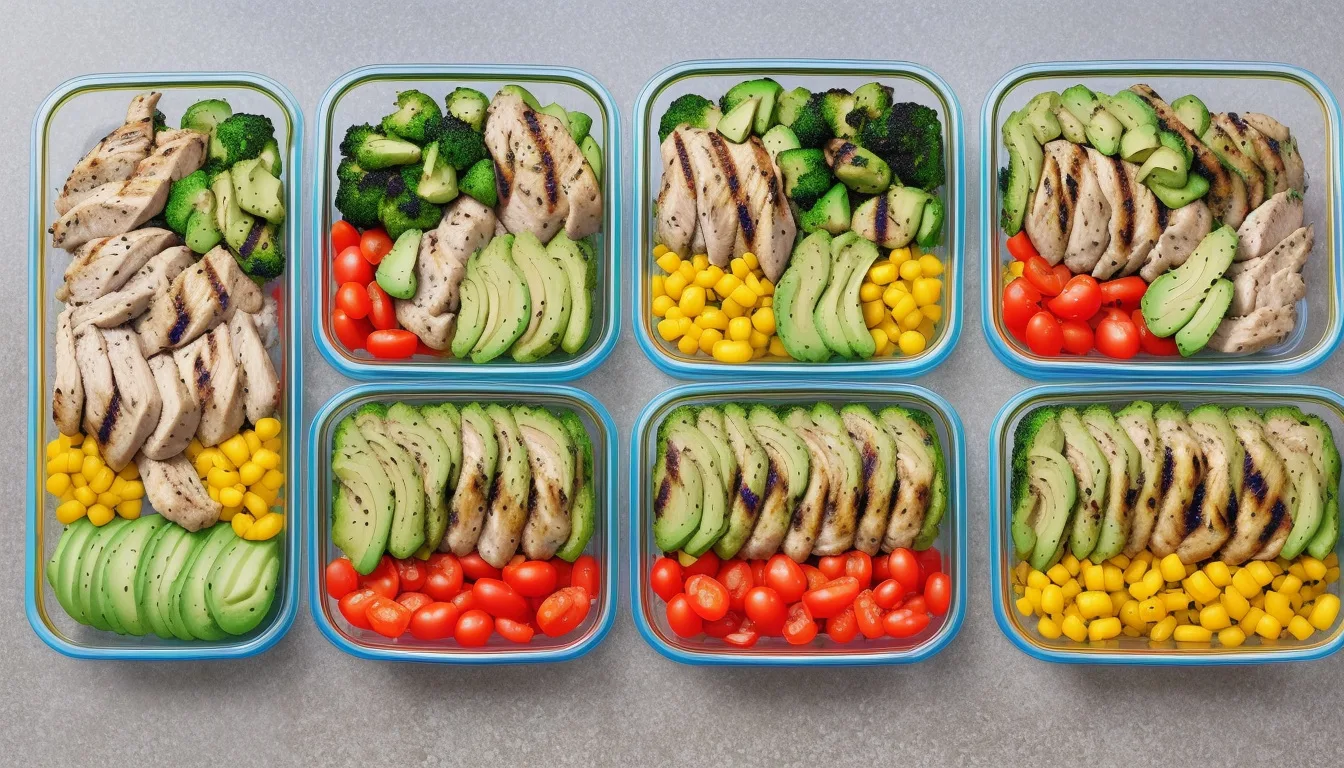
I understand the importance of mastering ketogenic macros for effective fat loss. If you’re new to this way of eating or looking to optimize your results, understanding how to balance your macronutrients will be crucial to your success.
In this article, I’ll guide you through the essentials of ketogenic macros, how to calculate your ideal ratios, and provide tips on food choices and tracking that can enhance your ketogenic journey.
The TL;DR
- Ketogenic macros are crucial for achieving and maintaining ketosis.
- Calculating your ideal macros requires a personalized approach based on activity level and goals.
- Choosing the right foods is essential for a successful ketogenic meal plan.
- Tracking macros effectively can enhance your fat loss and improve diet adherence.
- Awareness of common mistakes helps prevent setbacks and ensures sustained progress.
- Fast Link to Calculator.
Understanding Ketogenic Macros: What They Are and Why They Matter
Look, I know the drill. I can’t stress enough how crucial understanding ketogenic macros is to successfully achieving your health goals on the keto and low-carb diet. Essentially, ketogenic macros refer to the specific ratio of fats, proteins, and carbohydrates that you consume on a ketogenic diet. This often consists of a high-fat, moderate-protein, and very low-carbohydrate intake, traditionally calculated to be about 70-75% fats, 20-25% protein, and 5-10% carbohydrates.
Knowing your ketogenic macros is vital because these ratios help your body enter and maintain a state of ketosis, where it burns fat for fuel instead of glucose.
By tracking these macros, you can tailor your meal plans to ensure you’re maximizing the benefits of the ketogenic lifestyle, whether that’s weight loss, improved energy levels, or enhanced mental clarity. So, let’s dive deeper into the importance of these ratios and how you can easily calculate your own ketogenic macros.
Is it possible THIS is the BEST Fat Burner? Read our review here.
How To Calculate Your Ideal Ketogenic Macros for Ketosis
When it comes to embarking on a keto/low-carb lifestyle, understanding and calculating your ideal ketogenic macros is crucial for achieving success. I remember when I first started my keto journey, I was overwhelmed by all the different recommendations out there.
However, by breaking it down into simple steps, I was able to find what worked best for my body.
Is it possible THIS is the BEST Fat Burner? Read our review here.
The primary goal of the ketogenic diet is to enter and maintain a state of ketosis, where your body shifts from using glucose for energy to burning fat instead. To do this effectively, you’ll want to focus on a macronutrient ratio that typically consists of about 70% fats, 25% protein, and 5% carbohydrates.

For instance, if your goal is to eat 1,500 calories a day, you would calculate 105 grams of fat, 93 grams of protein, and only 25 grams of carbohydrates.
Remember, precise measurements and adjustments are key as you monitor how your body responds over time.
With some practice, you’ll find calculating your ketogenic macros becomes second nature, empowering you to reach your health and wellness goals.
This is a two-step process. Here we go
✅ Step 1: Calculate Your Basal Metabolic Rate (BMR)
Your BMR is the number of calories you’d burn if you stayed in bed all day doing nothing—just keeping your body alive and running.
The Mifflin-St Jeor Equation is the gold standard:
- For women:
BMR = 10 × weight (kg) + 6.25 × height (cm) – 5 × age (years) – 161 - For men:
BMR = 10 × weight (kg) + 6.25 × height (cm) – 5 × age (years) + 5
⚠️ Pro tip: 1 lb = 0.4536 kg | 1 inch = 2.54 cm
I know, annoying—but it’s worth it!
✅ Step 2: Multiply by an Activity Factor
Now we account for your daily movement:
| Activity Level | Description | Multiplier |
|---|---|---|
| Sedentary | Little/no exercise | 1.2 |
| Lightly Active | Light exercise 1–3 days/week | 1.375 |
| Moderately Active | Moderate exercise 3–5 days/week | 1.55 |
| Very Active | Hard exercise 6–7 days/week | 1.725 |
| Extra Active | Physical job or intense training | 1.9 |
And (drumroll please!), the formula: TDEE (Total Daily Energy Expenditure) = BMR × Activity Multiplier.
Easy, right? No?
Me, too. I HATE MATH.
So, I had a.i. create us a calculator to do it for us:
Tracking Your Ketogenic Macros: Tools and Tips for Success
When it comes to building your ketogenic meal plan, understanding ketogenic macros is crucial for success. As someone who has embarked on this low-carb journey, I can tell you that a well-balanced approach can significantly impact your results.
The ketogenic diet typically focuses on a high-fat, moderate-protein, and very low-carb ratio, usually around 70% fat, 25% protein, and only 5% carbs.
This means that as I plan my meals, I prioritize healthy fats like avocados, nuts, and olive oil while keeping my protein sources – such as chicken, fish, and eggs – at moderate levels. It’s important to be mindful of carb sources as well; I often choose leafy greens and non-starchy vegetables, which are nutrient-dense yet low in carbohydrates.
By accurately tracking my ketogenic macros, I ensure that I’m not only staying in ketosis but also nourishing my body in a balanced way. Remember, meal prep can be a game-changer, making it easier to adhere to this lifestyle while ensuring meals are not only delicious but also aligned with my health goals.
Some Quick Pointers
Common Mistakes to Avoid on a Ketogenic Diet
As someone who has had great success with the ketogenic diet, I’ve learned firsthand that while this low-carb, high-fat eating plan can be effective for weight loss and overall health, there are several common mistakes to watch out for, particularly concerning ketogenic macros. One of the biggest pitfalls I encountered was not properly calculating my macronutrients.
It’s crucial to understand the right balance of fats, proteins, and carbs to fit within your specific goals; 70% fats, 25% protein, and only 5% carbs is a classic ratio that many find success with.
Failing to stay hydrated is another mistake I made early on, as the diet can lead to an electrolyte imbalance.
Additionally, I noticed that many people overlook the importance of whole food sources and rely heavily on processed keto products, which may not be as beneficial for health as they seem.
Lastly, inconsistency in meal planning and preparation can derail your progress, so I’ve learned the value of sticking to a structured plan. By sidestepping chaos with a plan, I know I made my keto journey easier than it could have been.
Food Choices: Building Your Ketogenic Meal Plan
Tracking your macros on a ketogenic diet can be both exciting and challenging, but I promise that with the right tools and tips, you’ll find success in no time.
First off, understanding what ketogenic macros are, is crucial. Essentially, a ketogenic diet is high in fats, moderate in proteins, and very low in carbohydrates, typically comprising around 70-75% fats, 20-25% protein, and only about 5-10% carbohydrates.
To make this easier, I recommend utilizing apps like Cronometer; tools like this provide an intuitive way to log your food intake and track your ketogenic macros effectively. When logging, always check the nutritional information on packaged foods, and don’t hesitate to use a food scale for accurate measurements. Additionally, keeping a handy food diary can help you stay on track and identify any patterns in your eating habits. Th that end, I whipped up a pdf you can download and print out at home, to track your daily macronutrients — Get Your Free Macros Tracker
Remember, consistency is key—when I began tracking my macros, I found it incredibly helpful to plan my meals ahead of time. This way, I could ensure that I met my macronutrient goals without the stress of last-minute decisions. So gear up, stay motivated, and keep those ketogenic macros on point!
Always remember to check with your personal physicians prior to making changes to your diet.




